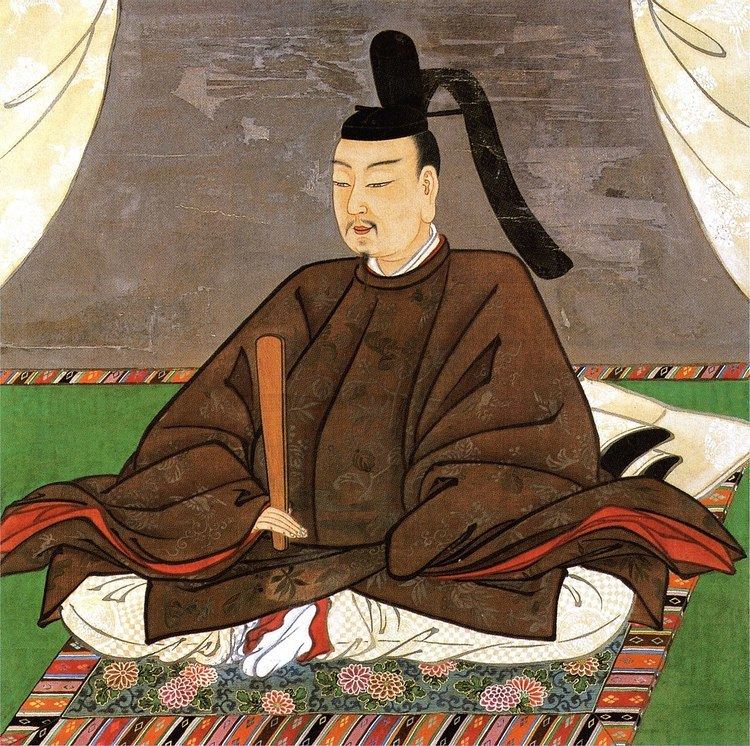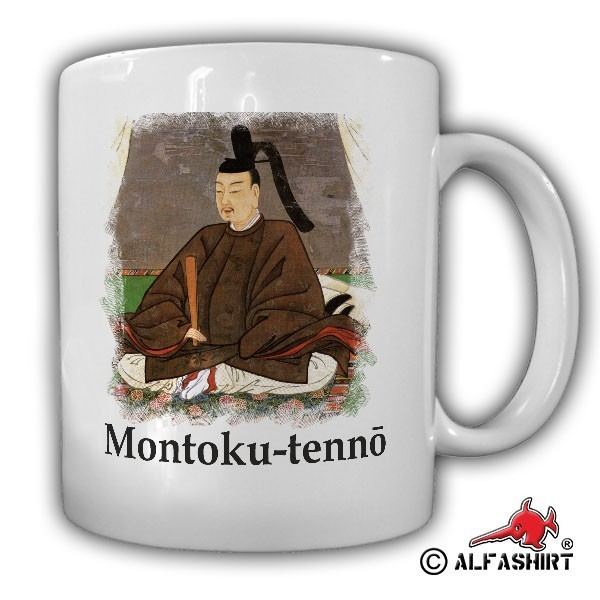Reign 850–858 Father Ninmyo Grandchildren Emperor Yozei Successor Seiwa Children Emperor Seiwa | Predecessor Ninmyo Parents Emperor Ninmyo Coronation 850 Name Emperor Montoku | |
 | ||
Died October 7, 858 AD, Heian-kyo Spouse Fujiwara no Akirakeiko (m. ?–858 AD) Similar People Emperor Seiwa, Emperor Yozei, Emperor Uda, Emperor Saga, Emperor Murakami | ||
Emperor Montoku (文徳天皇, Montoku-tennō) (22 January 826 – 7 October 858) was the 55th emperor of Japan, according to the traditional order of succession.
Contents
- Traditional narrative
- Events of Montokus life
- Kugy
- Eras of Montokus reign
- Consorts and children
- References

Montoku's reign lasted from 850 to 858.
Traditional narrative
Before Montoku's ascension to the Chrysanthemum Throne, his personal name (imina) was Michiyasu (道康). He was also known as Tamura-no-mikado or Tamura-tei.
He was the eldest son of Emperor Ninmyō. His mother was Empress Dowager Fujiwara no Junshi (also called the Gojō empress 五条后), daughter of the minister of the left, Fujiwara no Fuyutsugu.
Montoku had six Imperial consorts and 29 Imperial children.
Events of Montoku's life
Events during his reign included the repression of insurrections among the Ebisu people in Mutsu province in 855, and among the people of the island of Tsushima two years later.
The actual site of Montoku's grave is known. This emperor is traditionally venerated at a memorial Shinto shrine (misasagi) at Kyoto.
The Imperial Household Agency designates this location as Montoku's mausoleum. It is formally named Tamura no misasagi.
Kugyō
Kugyō (公卿) is a collective term for the very few most powerful men attached to the court of the Emperor of Japan in pre-Meiji eras.– kugyō of Montoku-tennō (in French)
In general, this elite group included only three to four men at a time. These were hereditary courtiers whose experience and background would have brought them to the pinnacle of a life's career. During Montoku's reign), this apex of the Daijō-kan included:
Eras of Montoku's reign
The years of Montoku's reign are more specifically identified by more than one era name or nengō.
Consorts and children
Kōgo (Tai-Kotaigō): Fujiwara no Akirakeiko (藤原明子) (829–899), also known as Somedono-no-Kisaki, daughter of Fujiwara no Yoshifusa (藤原良房).
Nyōgo: Fujiwara no Koshi/Furuko (藤原古子), daughter of Fujiwara no Fuyutsugu (藤原冬嗣)
Nyōgo: Fujiwara no Takakiko (藤原多賀幾子) (?–858), daughter of Fujiwara no Yoshimi (藤原良相)
Nyōgo: Fujiwara no Nenshi/Toshiko (藤原年子))
Nyōgo: Princess Azumako (東子女王) (?–865)
Nyōgo: Fujiwara no Koreko (藤原是子)
Nyōgo: Tachibana no Fusako (橘房子), daughter of Tachibana no Ujikimi (橘氏公)
Nyōgo: Tachibana no Chushi (橘忠子), daughter of Tachibana no Ujikimi (橘氏公)
Koui: Ki no Shizuko (紀静子) (?–866), daughter of Ki no Natora (紀名虎)
Court lady: Fujiwara no Retsushi (藤原列子), daughter of Fujiwara no Koreo (藤原是雄)
Court lady: Shigeno no Okuko (滋野奥子), daughter of Shigeno no Sadanushi (滋野貞主)
Court lady: Fujiwara no Konshi/Imako (藤原今子), daughter of Fujiwara no Sadamori (藤原貞守)
Court lady: Shigeno no Mineko (滋野岑子), daughter of Shigeno no Sadao (滋野貞雄)
Court lady: A daughter of Tomo clan (伴氏の娘)
Court lady: A daughter of Fuse clan (布勢氏の娘)
Court lady: A daughter of Tajihi clan (多治氏の娘)
Court lady: A daughter of Kiyohara clan (清原氏の娘)
Court lady: A daughter of Sugano clan (菅野氏の娘)
Court lady: A daughter of Sugawara clan (菅原氏の娘)
(from unknown women)
